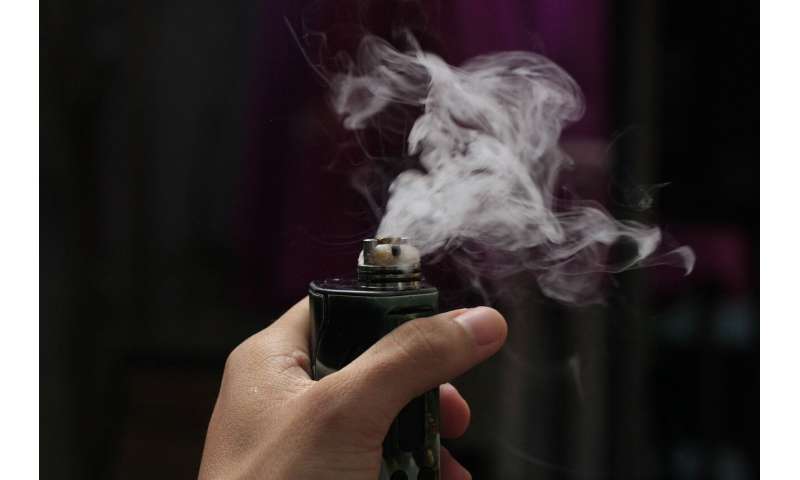
The fluid in e-cigarettes may cause a potentially life threatening lung inflammation in those who are susceptible, warn doctors in the Archives of Disease in Childhood after treating a teenage boy with respiratory failure linked to vaping.
The trigger for the condition, which led to this, is likely to have been an exaggerated immune response to one of the chemicals found in e-cigarette fluid, they say.
They report a case of hypersensitivity pneumonitis—a condition in which the air sacs and airways in the lungs become severely inflamed—in a 16 year old, who was initially suspected of having worsening asthma.
The boy, who had not been diagnosed with asthma before, had had a fever, persistent cough, and increasing difficulty breathing throughout the previous week. Antibiotics and an asthma reliever inhaler had failed to alleviate any of these symptoms.
Once admitted to hospital, his condition deteriorated rapidly, and he developed respiratory failure, necessitating external assistance for his heart and lungs to work properly, otherwise known as extracorporeal membrane oxygen, or ECMO for short, plus intravenous antibiotics and steroids.
Ten days later his condition had become critical, and he developed severe muscle weakness (myopathy) as a result of his critical illness and steroid treatment, which required lengthy rehabilitation.
During his recovery, he revealed that he had recently started vaping, and that he had been doing this fairly frequently, using two different types of e-cigarette liquid. The listed ingredients for both vaping liquids were the same apart from the unnamed flavourings.
He had smoked cannabis, he said, but not for a year. And he had not been in contact with farm animals or birds or recently travelled overseas—factors implicated in allergic respiratory reactions.
His lung scans and biopsy samples were consistent with hypersensitivity pneumonitis, and he was discharged 35 days after admission to hospital, but still on steroids.
Nearly 2 months after he had first been admitted, he still had symptoms. When the doctors tested his skin reactivity with a tiny amount of vaping fluid he got worse, so they took blood samples and analysed both vaping fluids to see if there were any possible chemical triggers.
The boy seemed to have more antibodies to one of the two liquids, raising the possibility that this might have been the source of his reaction.
After 14 months, his symptoms cleared up, and the condition of his lungs returned to normal.
This is just one case, and it’s not clear exactly what the trigger for the boy’s condition was.
Source: Read Full Article






